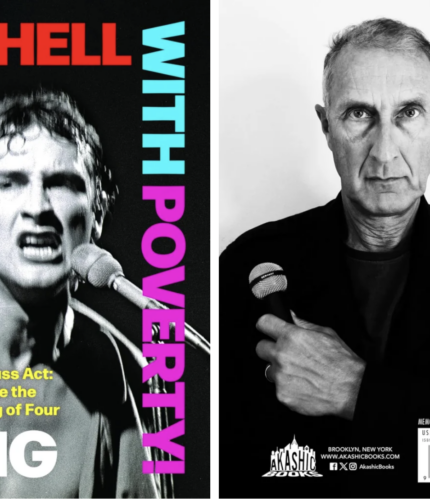
Florida Public Radio Emergency Network (FPREN) Storm Center | By Leslie Hudson
The 2024 hurricane season officially ends in about a week. And according to data from the Storm Prediction Center, this season ranks 3rd for the most tropical cyclone-induced tornadoes in a hurricane season, over the last 30 years. 178 tornadoes were spawned from tropical cyclones this year. The 2005 season ranks 2nd with 237 tornadoes and the historic 2004 hurricane season holds the top spot with 317 tropical cyclone-induced tornadoes.
Hurricane Beryl
With 68 recorded tornadoes, Hurricane Beryl had the most prolific tropical cyclone-related tornado outbreak in the United States since Hurricane Rita in 2005. Damages from the outbreak totaled just under 7 billion dollars. The majority of tornadoes associated with Beryl happened in eastern Texas, western Louisiana, and Arkansas. Beryl produced more tornadoes in the U.S. than any other tropical system has in almost 19 years. Beryl’s path of destruction spanned from Texas to upstate New York. Beryl produced an EF2 tornado that was on the ground for about 90 minutes and had a path length of 54 miles in Red River and Bossier parishes in Louisiana. It is the longest-tracked tropical tornado in recorded history. This is particularly impressive since most tropical tornadoes are not typically on the ground very long.
Hurricane Milton
In October, Hurricane Milton would create the 2nd highest tropical cyclone outbreak with 46 tornadoes in one day, a state record for Florida in the modern era.
Milton produced 5 EF-U, 8 EF-0s, 24 EF-1s, 6 EF-2s and 3 EF-3s. October 9th was one of the largest tornado outbreaks on record for Florida as clusters of tornadoes were confirmed across southern and eastern portions of Florida. It was also one of the largest outbreaks spawned by a tropical cyclone in the last 50 years. More than 100 tornado warnings were issued across Florida and millions were without power as a result of the storm.
Milton’s strongest tornado was an EF-3 with estimated winds of 155 mph that killed six people in a mobile home community near Fort Pierce in Saint Lucie County. Tropically induced EF-3s are quite rare. Only around half a dozen tropical tornadoes have been rated F3/EF3 since 2000. Two other EF-3s touched down in South Florida.
An EF-3 tornado hit Glades County and destroyed numerous homes, businesses, vehicles and other infrastructure. Another EF-3 tornado passed through Palm Beach County and destroyed many more homes, businesses, vehicles and other structures. There were more than a dozen reported injuries.
Hurricane Helene
Hurricane Helene spawned 21 tornadoes in South Carolina. Nine of them occurred in the Midlands. The National Weather Service says it was the worst tropical cyclone tornado outbreak in South Carolina since 2004 ( with Hurricane Frances 47 hurricane-induced tornadoes). Helene dropped the third-highest rainfall total in South Carolina from a tropical cyclone since 1956. 19.69” of rain fell in Jocassee, SC from September 26-29. But the month before Debby dumped 22.02” in Moncks Corner from Aug 5 – 9, 2024.
Hurricane Debby and Tropical Storm Alberto
25 tornadoes have been confirmed in association with Hurricane Debby. A majority of those tornadoes touched down in Carolinas and Virginia, but tornadoes were also confirmed in Florida, Delaware, Pennsylvania, and New York. Most tornadoes associated with tropical systems are generally weak and short-lived. However, one of the tornadoes produced by Debby was rated an EF3 on the Enhanced Fujita Scale. 1 person was killed by this tornado which impacted the Lucama, North Carolina area.
Tropical Storm Alberto produced three minor tornadoes – one on June 19 and two on June 20.
Hurricanes are massive rotating storms, and they typically spawn at least a few tornadoes in their outer rainbands and also from supercells that can flare up as the storm’s center moves inland, interacts with land which creates more friction before eventually weakening. Tornadoes happen most often along and to the right of the storm’s center path, especially in the right front quadrant, as the radar imagery illustrates.
How tropical cyclones produce tornadoes
Tropical cyclones are not able to as easily produce tornadoes while they are over open water due to the ocean’s smooth surface. When a tropical cyclone moves over land though, friction increases. This friction causes winds to slow at the surface while upper-level winds remain intense. This produces wind shear, which is the change in wind speed and wind direction with height. Wind shear allows for thunderstorms to start spinning which starts the processes that can eventually lead to tornadoes. Tropical tornadoes typically occur in thunderstorms on the outer bands of a tropical cyclone. This is where warm, moist air feeds into a tropical cyclone.
It’s been an impressive severe weather year across the country as well. As of early November, the United States had recorded 1,732 tornadoes, according to NOAA’s Storm Prediction Center’s preliminary tornado reports, a number far above the 14-year mean of 1,355.

Leave a Reply










